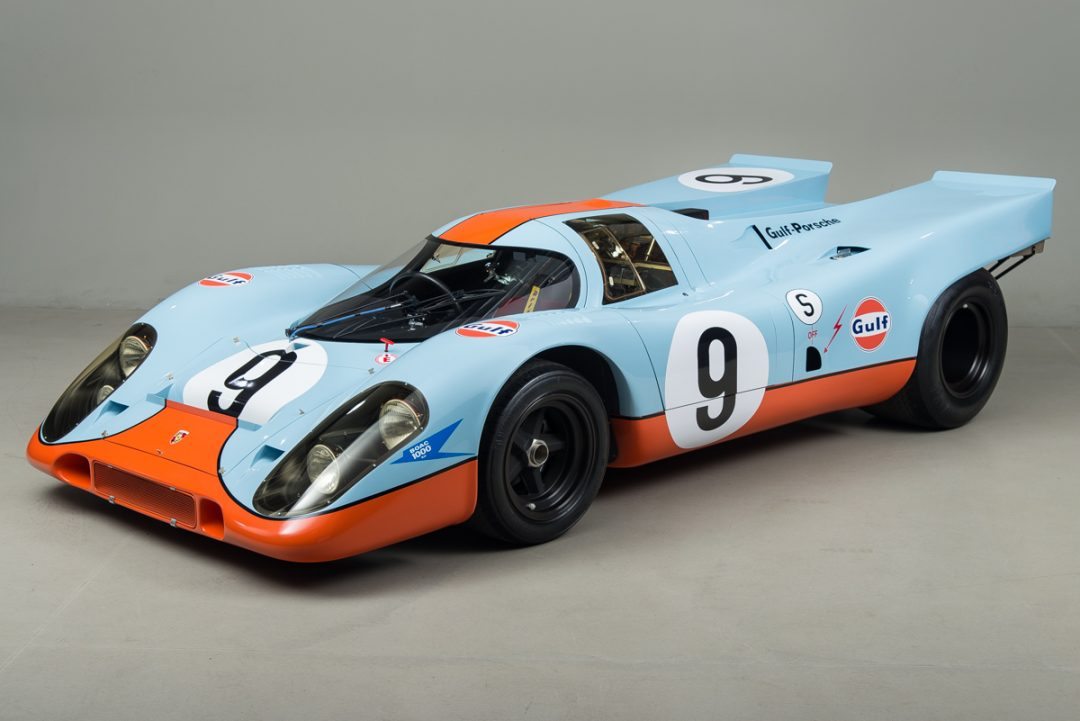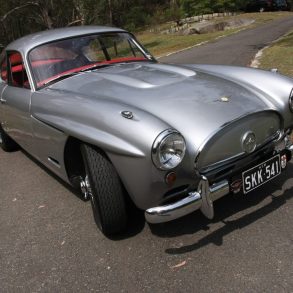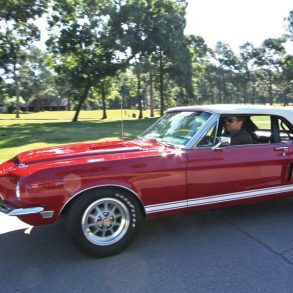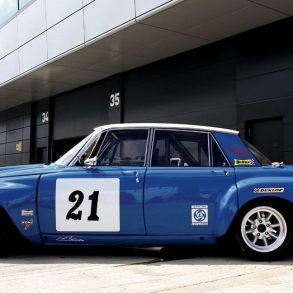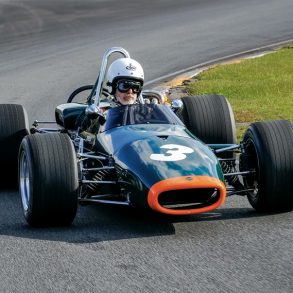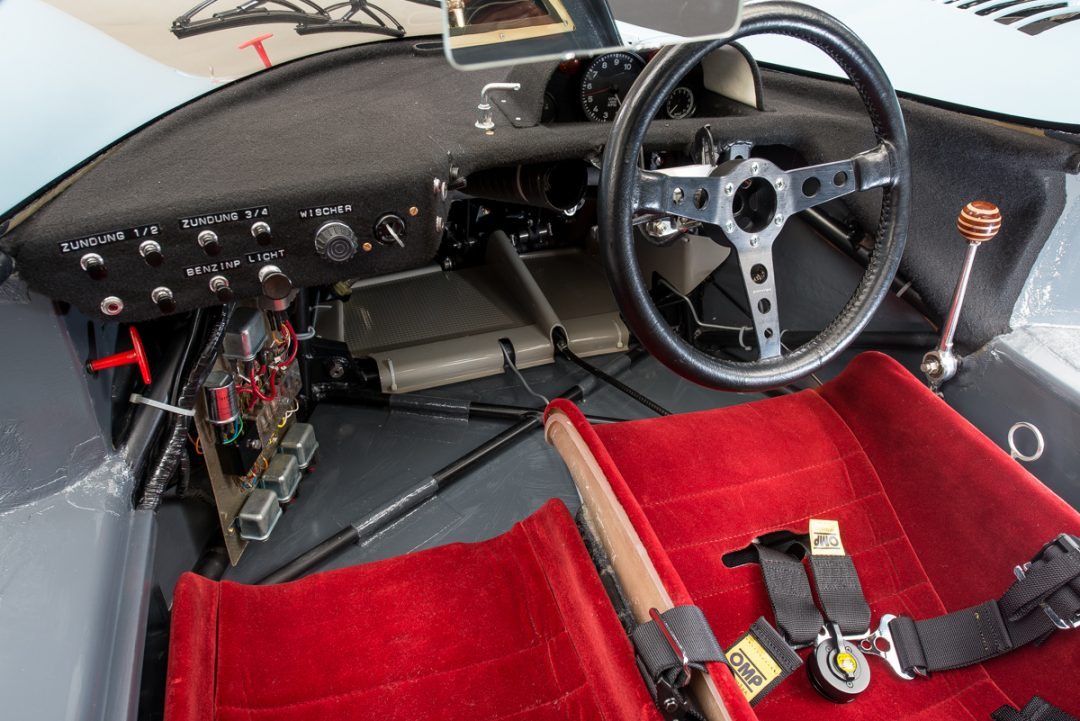
All of this took place in April of 1969, and while there was a basic agreement and understanding between Wyer and Porsche, there was still a full season of racing ahead. The high points for both organizations were J.W.A.E. once again claiming the 24 Hours of Le Mans with their “obsolete “ Gulf GT40, and Porsche winning the World Championship of Makes using a combination of 908s and early model 917s. The final contracts were signed in August.
The agreement called for Porsche to supply J.W.A.E. with seven complete 917s over the 1970 season. The first of those was chassis 917-004. A proforma invoice dated December 5, 1969 confirms this, with actual delivery to Slough three days later. 917-009 was to later join 004 in January, while 013, 014 and 015 were prepared and collected from Porsche for shipping to Daytona. Chassis 917-016 was shipped to J.W.A.E. in March of 1970 with chassis 017 being held in reserve at Zuffenhausen with the possibility of being built up as a new car for Le Mans.
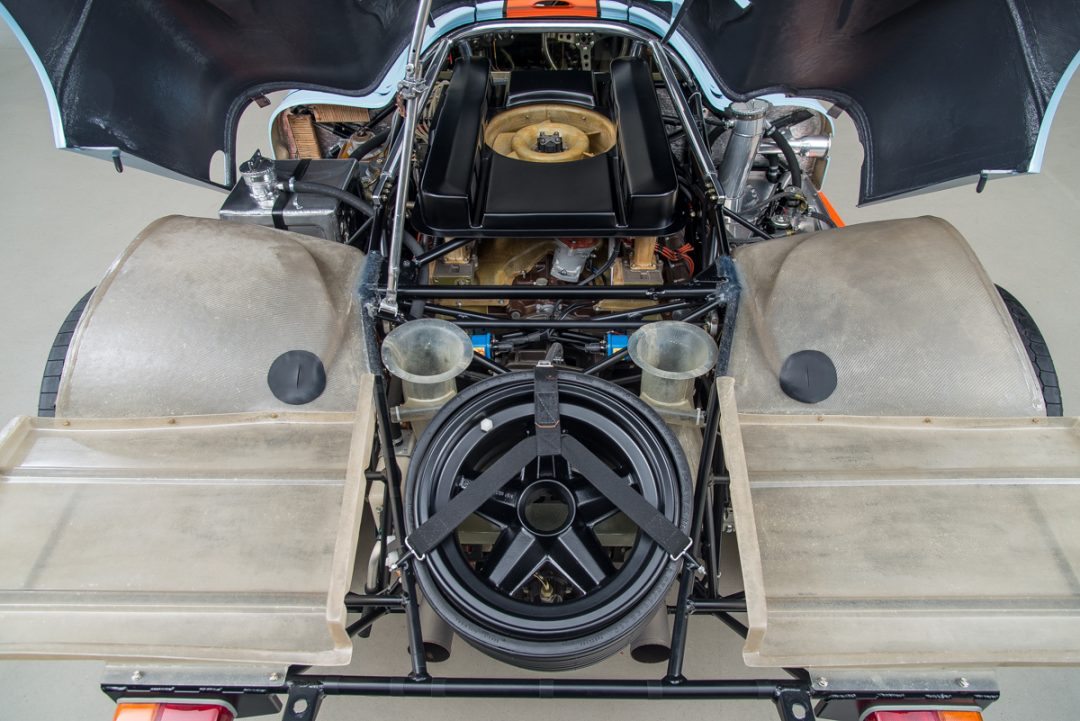
The BOAC 1000KM race at Brands Hatch featured the best of competitors, along with some of the worst of English weather in the form of wind and rain. Qualifying for 004 and 016 showed mixed results, but all that changed for the actual race. The driver pairings were Pedro Rodriguez and Leo Kinnunen in 016, and the great Jo Siffert and Brian Redman aboard 004. Both 917s started on narrower wheels with Firestone rain tires, and ran 4-speed transmissions. Rodriguez had a phenomenal race in the heavy English rain, and 016 went on to the overall victory. 004 had a troublesome start with Siffert suffering a flat left rear on the circuit and losing valuable time attempting to get back to the pits. He rejoined in third place and according to J.W.A.E. chief engineer, John Horsman, “the car had been alternating between second and third place and ready to win if Pedro faltered”. However it all came to an end on lap 177. Brian Redman was at the wheel of 004 when he was hit from behind by Chris Amon’s Ferrari 512S, effectively ending his race.
Upon returning to the J.W.A.E. workshops after the race, it was determined that although the damage to the chassis of 004 was not significant, due to the upcoming race schedule it would be advantageous to return the damaged chassis to Porsche and replace 004 with 017. This replacement chassis was picked up by J.W.A.E. from Zuffenhausen on April 26, 1970 and delivered to the workshops at Slough for immediate assembly. In order to maintain the validity of the carnet that had been issued for 917-004, the chassis tag from the damaged chassis was removed and welded in place on the new chassis of 017, thus 004 would continue in service. The damaged 004, now with the identity of 017 for paperwork purposes only, was returned to Porsche and eventually repaired later that fall and put in storage.
In 1975, the chassis known internally as 004/017, was sold to Alan Hamilton of Hamiltons of Australia, the official importer of Porsche vehicles for the land down under. The man was not only a racer but also a collector of Porsche race cars, having owned several 908s, and having purchased 917/30 chassis 004 directly from the factory. The purchase of an original 917K was almost an afterthought.
Eventually Hamilton sold the chassis to a racing friend, Pat Burke, who by using the usual sources located and purchased many of the parts needed for assembly. In 1989, after years of being in various states of partial assembly, 004/017 found its way to David Piper. Piper, who had amassed a sizeable amount of spare parts for the 917, completed the car in Gulf colors and added the short vertical fin tail section from 1971. He would be very familiar with the car, since he raced 004 in 1969 at its first race, the Nurburgring 1000KM. Piper and co-driver Frank Gardner took 8th place, and thanks to this finish 004 is considered to be the first 917 to finish a race in its entirety.
In 2004, the completed and running car was being offered by Fiskens of Kensington, and a deal was made by principal Gregor Fisken with Stephane Ratel of the SRO Motorsports Group. Ratel has impeccable credentials having been one of the founders of the BPR Series, which later became the FIA GT Championship. Ratel had his friend and former partner in the BPR, Jurgen Barth, visit Fiskens and inspect 004/017 prior to purchase. Ratel had planned to run the 917 in historic events but simply did not have the time to participate, and the car then found its way to Miguel Amaral of Portugal. Amaral had his own impressive stable of current and vintage race cars, and raced 004/017 on the great circuits of Europe on numerous occasions.
In 2008, Amaral decided to send the car to California for restoration under the guidance of noted Porsche historian Kerry Morse. The car was delivered to Porsche Motorsport North America for disassembly of the drivetrain and electrics. Unfortunately the project suffered a series of delays and setbacks, not an unusual occurrence with a difficult, high-end restoration.
In 2011, at Rennsport IV, the subject of 004/017 came up between Kerry Morse and Bruce Canepa. Having pursued this specific 917 in the past, and still interested in purchasing it, Canepa and Morse worked out a deal.
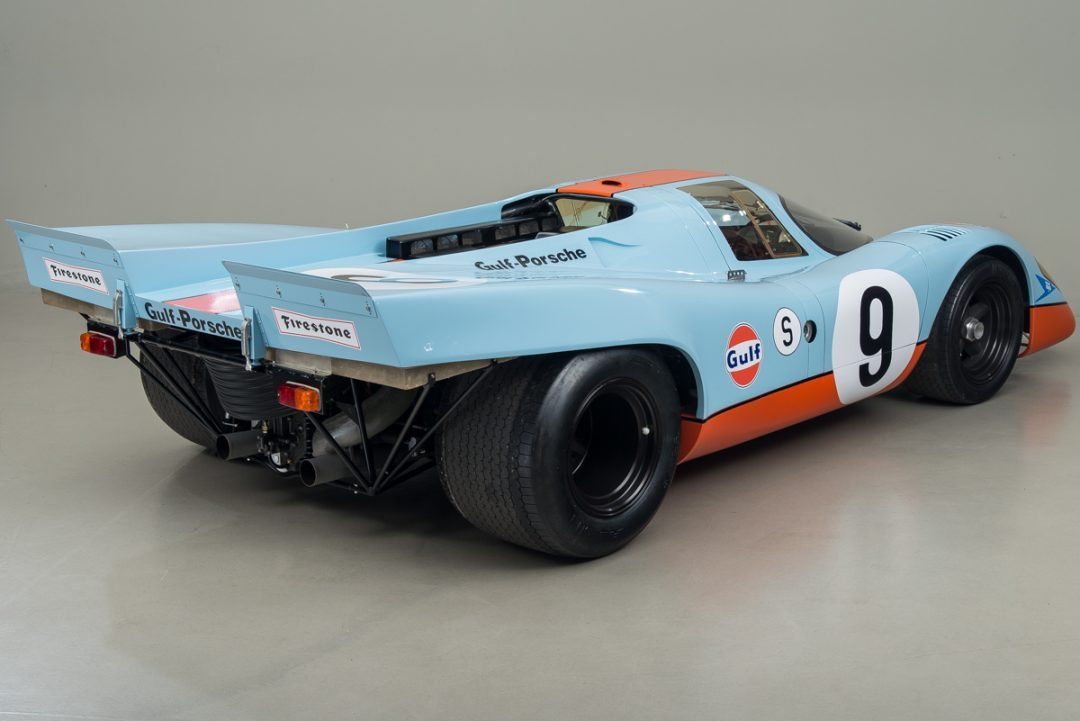
While the craftsmen at Gunnar began the two year process of completely restoring every aspect of the 917 body and chassis, the Canepa team engaged Ed Pink Racing Engines in Van Nuys, California to rebuild the legendary powerplant. Under the careful guidance of general manager, Frank Honsowetz, the 4.5 liter flat twelve cylinder was rebuilt and increased to 5.0 liters, the most potent of 917K engine specifications. A new crankshaft had to be manufactured to accomplish the build, and Canepa gave this task to the craftsmen at Crosthwaite & Gardner in the England who are renown for their precision machine work on vintage racecars. Finally having sourced a new set of 5.0 Mahle pistons and cylinders the intricate engine build was complete. The rare Type 920 four-speed gearbox was entrusted to Dieter Inzenhofer of Andial fame for a complete rebuild.
The Canepa project team spent long hours making sure all the elements going into 004/017 were absolutely correct. Working with a cadre of specialty parts suppliers, and using up plenty of favors, part by part the 917 came together. For example the headlights, NOS and still in their Porsche boxes, came from Kevin Jeanette’s personal parts stash. Kerry Morse assisted the build, contributing his vast knowledge, and access to his sizable period parts collection. From the smallest bolt, to the intricate aluminum chassis, every element of the 917 was scrutinized and vetted. The goal was to execute the most accurate restoration of a 917 to date, and thanks to the hard work of multiple teams of experts that goal has been accomplished.
This particular chassis occupies a special place in Porsche history: 004 began life as one of the original cars for homologation in April of 1969; It is one of the few examples to be raced in 1969; and it is the first 917 to go the distance and finish a race in its entirety. Even with that stellar pedigree, it really comes down to the fact that 004 was, and is, a legitimate J.W. Automotive Engineering 917K. That iconic livery on a 917 even to the uninitiated represents the pinnacle of the 917K’s road racing efforts. 917s are truly rare beasts, and it is even rarer for one to come up for sale, especially one that can irrefutably wear the soul-stirring Gulf colors of blue and orange.
Race history of 917-004 (prior to chassis number 017)
1969
April FIA (CSI) Homologation and registration
May Preparation for the Nurburgring 1000KM
June Nurburgring 1000KM (Drivers: Frank Gardner and David Piper) Result 8th overall.
June Stability testing at Hockenheim (Driver: Herbert Linge)
November Conversion to full 917K bodywork
December Preparation and delivery to J.W. Automotive Engineering
1970
March Preparation for BOAC 1000 KM race at Brands Hatch
April BOAC 1000KM race at Brands Hatch (Drivers: Jo Siffert and Brian Redman), DNF
April Original chassis 917-004 returned to Porsche to be repaired and renumbered as chassis 017.
Technical Specifications
Porsche 917 004/017
Motor: Type 912/11
5.0 Liter (4998cc) twelve cylinder air-cooled
Bore & Stroke 86.8 x 70.4
10.5 compression ratio
630 HP @ 8300 rpm
Torque 434 ft.lbs @ 6500 rpm
Bosch fuel injection
Transmission: Type 920 four-speed with reverse
Chassis: Aluminum tube construction 1.6mm wall thickness
Body: Fiberglass reinforced resin
Wheelbase: 90.5 inches / 2300mm
Front wheels: 10.5” x 15” magnesium (9” x 15” rain)
Rear wheels: 17” x 15” magnesium (12” x 15” or 15” x 15” rain)
Front track: 1582mm or 1620mm depending on wheel width
Rear track: 1533mm or 1584mm depending on wheel width
Overall length: 162 inches / 4120mm
Width: 78 inches / 1980mm
Height: 37 inches / 940mm
Weight: (without fuel) 1764 lbs / 800 kgs


